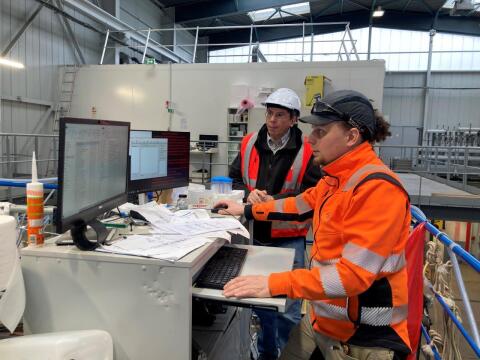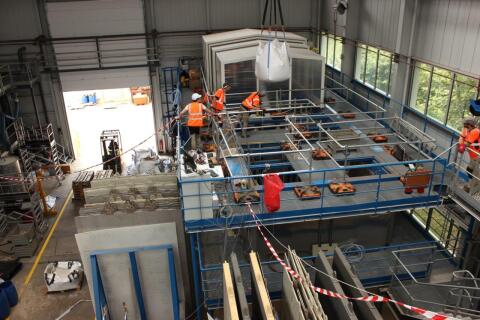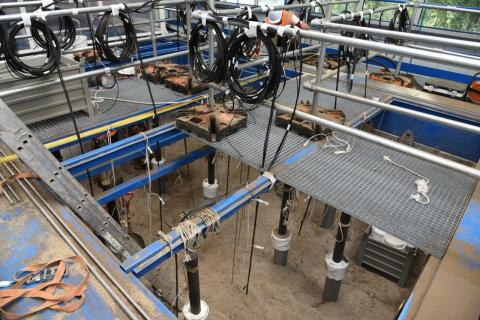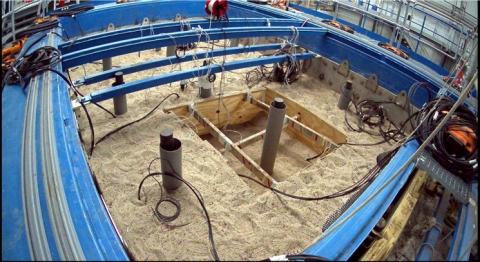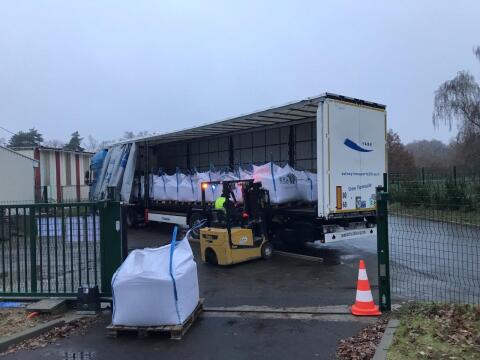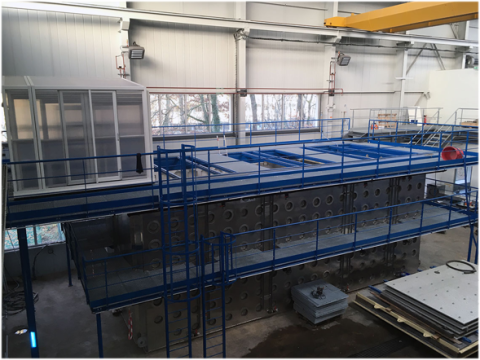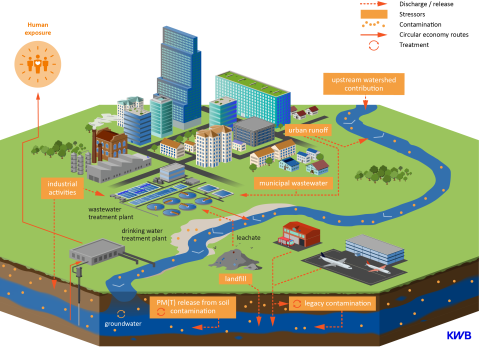CS6: Fate and transport and (bio)remediation of soil and groundwater contaminated by PFAS from AFFFs, Orléans
Our aim: To assess PFAS fate and transport from soil to groundwater and demonstrate technologies for their treatment removal
When Aqueous Firefighting Foams (AFFF) -containing PFAS are used, the surrounding soil and groundwater can be contaminated. Case Study 6 has therefore set itself the goal to assess PFAS fate and transport from soil to groundwater and to develop innovative, sustainable, and cost-effective technologies for the remediation of soil and groundwater polluted by PFAS.
To reach these goals, Case Study 6 is conducting an experimental application of AFFFs on topsoil under controlled conditions from lab-scale to semi-real conditions in an experimental platform in Orléans called "PMP PRIME" (PMP stands for pluri-metric pilot), a research infrastructure that connects laboratory experiments and full-scale tests.
In the PMP, Promisces partner BRGM conducted a long-term experiment over a period of 15 months. Monitoring was carried out to accurately quantify both water and mass fluxes. The PMP reproduces the soil-groundwater continuum by enabling water sampling at multiple depths, supported by specific probes and sensors. By simulating the soil, vadose zone, and groundwater environments at a semi-realistic scale, the PMP platform offers 4D monitoring of the unsaturated–saturated continuum. It is an ideal environment for scaling up technology readiness levels (TRLs), validating, and demonstrating numerical models for PFAS fate, transport, and remediation technologies.
Conclusion
First, laboratory experiments were conducted using both unsaturated and saturated columns to assess the fate and transport of PFAS in porous media, in order to design the pilot-scale test. These experiments demonstrated the key role of sorption at interfaces in controlling the fate and transport of PFAS in porous media. Both standard PFAS solutions and diluted AFFF were used. At the same time, remediation tests have been designed to remove PFAS, based on laboratory experiments, from the porous media with non-Newtonians fluids (NNF) (foam and gels) and to treat contaminated water thanks to specific additives (reducers and other additives). It was shown that the in-situ chemical reduction was not the best solution. So, the destruction of the PFAS has been carried out on site (i.e. after flushing).
During the second phase of this study, the work was carried out in the BRGM experimental hall in Orléans (France), for the full-scale experiment using the Plurimetric Pilot (PMP). The dimensions of the pilot are as follows: length: 5.2 m, width: 3.6 m, and height of the porous medium: 3.6 m. The PMP was filled with 80 m³ of man-made soil. The hydrodynamic properties of this material were previously determined at the laboratory scale. The PMP system was equipped with monitoring devices, pumps, sampling systems, and sensors positioned at various locations and depths. Water samples were analysed for total organic fluorine and targeted PFAS compounds. The AFFF used in the experiment was also characterized.
The first stage of the experiment focused on reproducing the migration of a PFAS plume from soil to groundwater.
This stage includes:
- Establishment of the hydrodynamic conditions prior to PFAS injection (baseline monitoring over 3 months),
- Injection of diluted AFFF onto a defined area (over 3 weeks),
- Leaching of PFAS from the contaminated area, simulated by weekly water infiltration to mimic natural recharge (over 5 months)
- Remobilization of PFAS due to variations in the groundwater level (over 3 months).
Throughout all stages, 4D monitoring (3D spatial + time) of the unsaturated–saturated continuum was conducted. To better understand the experimental observations, a reactive transport model was developed to simulate the PFAS plume behavior within the PMP.
The main results from the experiment highlight the complexity of PFAS migration from soil to groundwater, especially the critical role of the unsaturated zone. Most PFAS compounds were retained in the capillary fringe. Furthermore, the residence time of PFAS in the soil–groundwater continuum varied significantly depending on their molecular characteristics and local hydrodynamic conditions. A marked difference was observed between the chemical signature of the original AFFF and those measured in the soil and groundwater. The model's ability to accurately simulate the PFAS plume also confirmed the relevance of the modelling tools for characterizing PFAS behaviour at real scale.
The second stage of the PMP experiment is dedicated to test the up-scaling of the remediation technology at semi-real scale by developing a groundwater and soil treatment train (three months). It is based on i) a PFAS extraction technology using surfactant foam and ii) two techniques for destroying extracted PFAS based on a heated polar aprotic solvent/sodium hydroxide mixture and sonocavitation.
On the pilot, a treatment train based on the extraction of PFAS from soils and the destruction of PFAS was tested. Foam extraction generates a quantity of effluent more than 10 times less than conventional processes (i.e. washing with water or surfactant) with high remediation yields. PFAS destruction techniques with DMSO or sonocavitation are very effective but require significant energy and a residence time of several hours. Further tests will be conducted as part of other research projects that are starting.
The injection of NNF is a very promising technology in the field of in-situ treatment of soils and groundwater. Improving the know-how on this technology in the framework of PROMISCES allows its application to many other polluted sites (alluvial medium, fractured medium). The results of the on-site PFAS treatment are also very promising: on-site oxydation, sono-cavitation have highlighted interesting results.
Image source: BRGM

